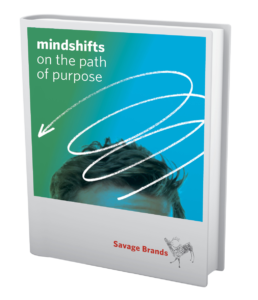Empathy and Accessible Design
Empathy in the design process makes sure that we honor every person who may interact with our work to assure that it is accessible for them.
I had gone to sleep the night before, only to wake up to something profoundly different. All of my hearing on one side was completely gone. Had I slept on that side wrong? Did I have water in my ear? And what was that loud, staticky, tea-kettle-whistle hissing sound coming from my right ear? Little did I know I just woke up to my new reality – this cruel biological joke.
Initially, the adjustment to permanent hearing loss on one side was awful, like the head cold from hell that wouldn’t go away. All of the auditory stimuli you might experience at any moment – people talking, a cough, road noise, the phone ringing, music – was now being funneled in on just one side now, and it was loud, turned up to 11. Add a constant hissing sound over the top of that chaotic environmental symphony and you’ve got a gumbo of acoustical pandemonium.
Fourteen years later and conversations with anyone can be an exercise in patience. Ask my wife. She is the MVP of every conversation we have as I repeatedly have to ask, “What’s that?,” “Say again?,” and “Huh?” My hearing loss is on my right side, so driving a car and trying to have a conversation? Yeah, fun times. Seriously, my tombstone’s epitaph will probably just say, “Wait, what?”
And then Covid entered the picture a couple of years ago. The widespread use of masks during the pandemic has made speech less clear, as a mask muffles the voice and does not allow as much enunciation and diction. Even worse, the installation of clear plexiglass barriers between customers and employees at most checkouts completely block the majority of sound, especially when used in combination with a mask, leading many of us to lean around them to hear, thus minimizing the reason for using them in the first place. Fortunately, clear masks were quickly developed for the hearing impaired to help them read lips and facilitate communication. But plexiglass barriers persist, and I have to imagine designers and planners are working on innovating more sustainable, user-centric solutions for the long term, if not for this pandemic.
Oddly enough, even as a member of the design community, it never occurred to me pre-pandemic how product design and spatial planning can present additional barriers for the hearing impaired. This awakening, or new perspective, made me feel, well, selfish, and gave me increasing empathy for those who have dealt with these barriers their entire lives.
The topic of accessible design, the design process in which the needs of people whose physical, mental health or environmental conditions limit their ability are specifically considered, has never been top of mind because I had an “it doesn’t affect me personally” attitude about it. The truth is, while accessibility issues may not affect each of us now, they could eventually. I, for one, am thankful that this pandemic has given me more insight into not only my own condition, but empathy toward others who have had to live their entire lives in a world that isn’t designed to meet their unique needs.
Our design teams and design priniciples must evolve to meet the myriad needs of those with different abilities. We can no longer employ a universal design ideal in our design and development process. Considerations must be made for diverse audiences, from those who live with color blindness to those who experience deafness. We must utilize a user-design process that honors each and all of the people who may interact with our work and assure that it is accessible for them.
For me, as a designer of branding communications, that translates into considerations like ensuring clarity in descriptive page titles, utilizing succinct language that tells people exactly what they are clicking on in navigation or links, or testing for appropriate color contrast and potential font size issues. It’s all worth it, even if it helps eliminate one more “Huh?” someone has to deal with.
![]() To Doug, inspiration is life, an energy, something you can breathe in and ingest – more sustaining than the finest caffeinated, gluten-free, protein-packed, responsibly-sourced substance on earth. Doug's true passion is helping non-profits inspire change through strategic design.
To Doug, inspiration is life, an energy, something you can breathe in and ingest – more sustaining than the finest caffeinated, gluten-free, protein-packed, responsibly-sourced substance on earth. Doug's true passion is helping non-profits inspire change through strategic design.
